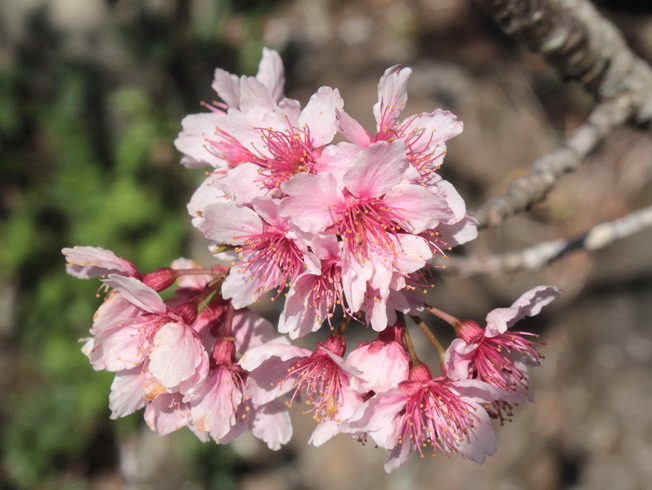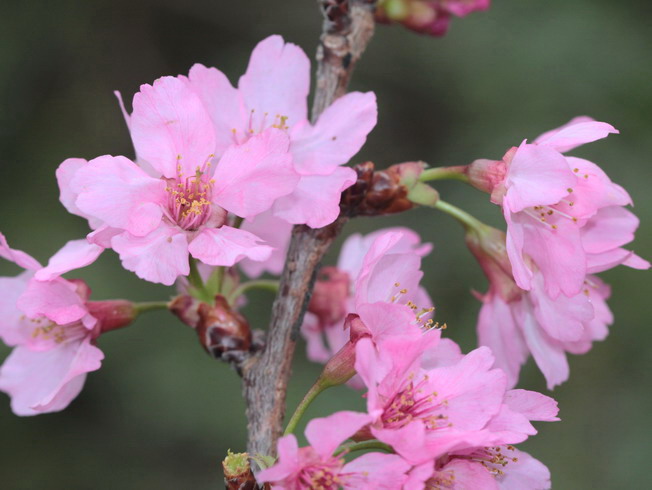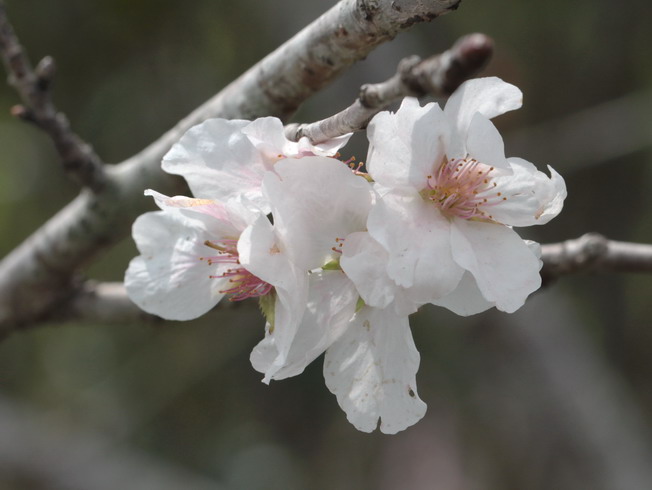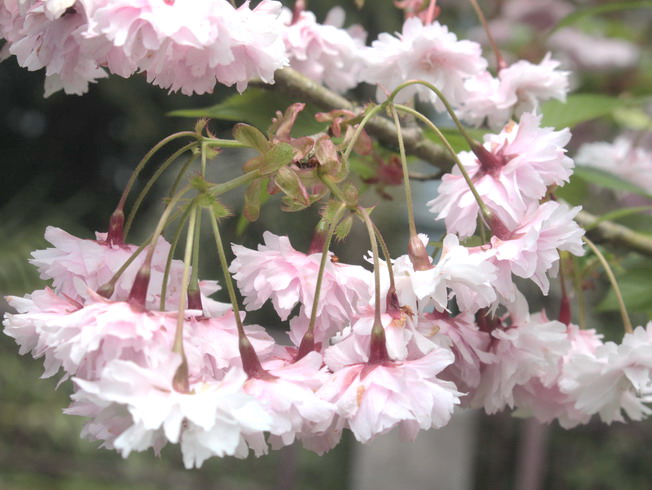| |
 |
News |
 |
Browsing: 2733 times

|
Date:2020-03-06
Bracket:2020 NCYU NEWS
Department:ncyu
|
 Survey Shows 40 Species of Cherry Blossoms along Alishan Highway: Highest Number in Taiwan
Survey Shows 40 Species of Cherry Blossoms along Alishan Highway: Highest Number in Taiwan
Earlier this year, the Alishan Branch, Directorate General of Highways invited Zhang Kun-Cheng, assistant professor of the Department of Forestry and Natural Resources, National Chiayi University, to survey the cherry blossom species grown along the Alishan Highway. According to the survey results shown just recently, two species including “Yumura cherry blossoms” and “Sendai Yoshino cherry blossoms” were added to the list of cherry blossom species in the Alishan National Forest Recreation Area. The survey also found out that the Alishan Highway features “Formosan cherry blossoms,” “Tsubakikan cherry blossoms,” “Yokohama Hizakura,” “Usuzumi cherry blossoms,” “Salver-shaped cherry blossoms” and other species that have never been seen in the forest recreation area. The whole Alishan area, which boasts up to 40 cherry blossom species, is now known to be the region with the greatest number of cherry blossom species in Taiwan. Commissioned by the Chiayi Forest District Office, Forestry Bureau, NCYU had carried out an investigation in the forest recreation area, where as many as 30-plus species were identified. The forest recreation area is the cherry-blossom viewing spot with the highest number of cherry blossom species in Taiwan. In the recent two years, the Chiayi Forest District Office has been identifying cherry blossom species in the recreation area with continued efforts. A book on Alishan’s cherry blossoms is expected to be published when the identification is completed.
Beginning from February, the cherry blossom season will last well into April, during which you may feast your eyes on diverse species of cherry blossoms. According to Zhang Kun-Cheng, assistant professor of the NCYU Department of Forestry and Natural Resources, few have noticed the Yumura and Sendai Yoshino cherry blossoms in the Alishan National Forest Recreation Area, and their species have not been identified until recently because of their relatively fewer amount and late flowering season. For most of the cherry blossom species in the recreation area that had been introduced during the Japanese colonial period, few trees remain and thus require immediate breeding and conservation. The area may serve as a germplasm bank for new species of cherry blossoms in the days to come. In recent years, new cherry blossom trees with unknown species and origins have been grown along the Alishan Highway. Moreover, many farmers who master the grafting techniques have grafted exotic species onto native Taiwan’s cherry blossoms along the highway, adding to the variety of the cherry blossom species on both sides of the highway.
As pink cherry blossoms burst into full bloom around Taiwan, many errors could be seen on news coverage that mistake pink cherry blossoms for Showa or Fuji cherry blossoms (also known as Mame cherry blossoms). Assistant Professor Zhang Kun-Cheng explained that both Showa and Fuji cherry blossoms are species characterized by their white petals.The pink species in Taiwan which we usually mistake for Showa, Fuji, or even Yoshino cherry blossoms, as a matter of fact, include Tsubakikan cherry blossoms, Kawazu cherry blossoms, Shuzenji cold cherry blossoms, cold cherry blossoms, Yokohama Hizakura, as well as new species that haven’t been registered. A closer observation needs to be taken to identify their species, based on such traits as petals, calyx tubes, calyx lobes, leaves and hairy flowers. The current lack of a field guide to cherry blossoms in the market has more or less led to cases of wrong identification. In the future, the Forestry Bureau will publish a field guide to cherry blossoms complete with survey results, which is expected to become a useful reference book in the field.
|



|
 |

|
 |
|
 |
 |
|


 ][
][